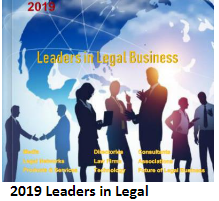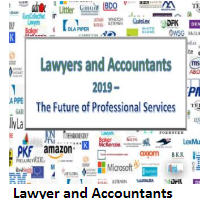Robin Snasdell Managing Director, Morae
I am responsible for leading Morae’s law department strategy and technology consulting including the spend management business. I bring over 25 years of experience providing impactful strategy and technology consulting to law departments of global companies, law firms and government agencies. I am an accomplished professional offering a unique combination of leadership, sales, team building, solution design, process improvement, and legal and technology experience. I have extensive experience interacting with Fortune 100 General Counsels and other Legal Leaders on procurement strategies, legal service delivery models, operational improvement, cost reduction, organizational design, change management and technology innovation.
_____________________________________________
There is a vast array of legal technology available today, ranging from core products like matter management/e-billing systems to highly sophisticated analytics reporting tools and collaborative portals that allow for the communication of information inside and outside an organization. Within the past few years legal technology has continued to evolve, with more options for platforms such as enterprise legal management (ELM) software, more systems being based in the cloud, and the development of specialized rapid deployment tools that can address specific “fill the gap” needs. For each technology tool there is also a variety of vendors, and every vendor’s product has its strengths and weaknesses. With all of these options, identifying the right technology and justifying its expense can be a challenge. A systematic approach to technology planning — understanding the available options, identifying what is actually needed, and evaluating the proposed system’s cost effectiveness and return on investment (ROI) — will help avoid expensive mistakes and lead to the selection of the right technology to yield the most effective long-term benefits.
Technology Benefits
The right
technology offers a number of benefits. First and foremost, it helps law
departments and law firms meet their clients’ evolving needs and expectations.
Today’s clients expect their in-house counsel to have business acumen in
addition to legal proficiency, and to provide legal services in an efficient,
cost-effective manner. In turn, law departments impose similar expectations on
their law firms, with a heightened emphasis on value, efficiency, and cost
effectiveness of the services provided, in addition to the actual results.
Technology can help law departments and law firms operate more efficiently and
cost effectively. Beyond basic functions such as tracking and organizing work
and cost, the emphasis of the newest technology is on enabling the efficient
execution of work by legal professionals. Technology can improve communication,
both internally and between inside and outside counsel. It can assist in
benchmarking and provide information for advocacy regarding achieved results.
Through the opportunities it offers for consistency and timeliness, it can
reduce risk. Finally, it allows counsel to be more proactive, facilitating the
collection of information to make better-informed decisions, allowing counsel
to answer business questions on a timely basis and to communicate insights
based on the most current information.
Technology Options
Organizations’ technology maturity varies widely, from having no technology or using it on an ad hoc basis, to some processes and tools that facilitate repeatable functions, all the way to fully mature programs in which technology facilitates the improvement of processes through qualitative feedback. Where an organization falls on the technology maturity spectrum may depend on its size, the nature of its business, or a variety of other factors.
Law Departments
As a best
practice, law departments should begin with the core systems that facilitate
the department’s ability to track and provide legal services, and are the
foundations for other, more sophisticated technologies. Below is an
illustration of a mature law department’s technology infrastructure, based on a
“matter-centric” design in which all systems are linked by a common matter
identifier (for example, a “matter number.”)
Core Systems
Law department core technologies are generally thought to be matter management/e-billing systems, document management systems, or intellectual property (IP) management systems if the department has an IP portfolio.
Systems Supporting Legal Services and Company Functions
Ideally, a department’s core technologies can integrate with other technology used by the department such as management reporting systems; systems supporting specific legal services (for example, e-discovery and legal holds, the latter being a process in which information is preserved in anticipation of litigation) or company functions in which the law department is a stakeholder (records and information management, contract management, etc.); and systems that support operations, including enterprise-wide technologies.
Legal Holds and E-Discovery Systems
Organizations must choose which, if any, e-discovery functions to perform in-house versus those they wish to outsource. The most commonly in-sourced e-discovery functions include legal holds and collection. Most organizations outsource the traditionally commoditized e-discovery functions of processing, hosting, review/managed review, and production.
Legal Hold Systems
Effective management of legal holds increasingly requires the use of technology. The most widely recognized benefit of legal hold systems is that they automate the tracking of custodian acknowledgements/responses to legal holds and the necessary follow-up procedures (e.g., automated resends, manager escalation, and periodic reminders). Their reporting capabilities help demonstrate defensibility of the organization’s legal hold process. Legal hold systems commonly integrate with matter management systems to readily share important matter information, avoiding the need to re-key the same information multiple times or manage it in disparate systems. Legal hold systems can also integrate with HR systems, IT inventories, and RIM (records and information management) systems, aiding in custodian and data source identification, and thereby improving scoping efforts. All organizations must have a sound legal hold process, and those with a moderate amount of litigation should consider investing in legal hold systems.
Collections Technology
Organizations are increasingly building dedicated in-house teams equipped with a toolbox of collection technologies ranging from IT backup software to highly specialized stand-alone and network tools. Organizations should exercise caution when in-sourcing collection, however, because it can be complex, and the process must be forensically sound and legally defensible. In many instances, companies continue to look to external assistance for highly contentious matters or when expert-level forensics, analysis, and/or testimony may be needed.
Records and Information Management Systems
RIM systems assist in the indexing, storage, retrieval, and disposition of records. Some track and control documents, folders, and/or boxes from creation to final disposition, and can automate records retention schedules. RIM systems can be integrated with enterprise content management (ECM) systems and litigation hold systems.
Contract Management Systems
Today’s contract management systems span the entire contract lifecycle. Many contract lifecycle management (CLM) systems include functionalities that track approvals and other steps in the process, send email reminders to the parties involved, and have built-in redundancies that allow for escalation or sidestepping in certain circumstances, facilitating better management of the approval process. These systems now often provide for electronic signature. New tools are available, some embedded in traditional CLM platforms and others that are add-ons, which can automate aspects of contract generation and greatly expedite time to market, ensuring compliance for internal or external requirements. Some of the newest tools are custom-designed and incorporate logic components so that they can be used on more sophisticated contracts that may previously not have lent themselves to more basic template-based technology. These new tools are simple to use, powerfully dynamic, and can be client-facing, allowing self-service. The technology currently available helps speed time to market and manage contract obligations, both of which enhance the organization’s revenue capture.
Law Firms
Law firms’ core
technology includes the systems that allow firms to conduct their business on a
day-to-day basis. This core technology includes time and billing systems;
financial management systems; financial analytics/business systems, and
document management systems. Most firms have cost recovery systems (connected
with copiers, phone calls, etc.), although those may be becoming antiquated as
more clients disallow those expenses. File management systems were essential in
the past, but they are now evolving to more sophisticated records management
systems. HR systems are also useful. Depending on the size and market position
of the firm, customer relationship management (CRM) systems may be important.
Beyond these
core systems, many law firms find case management, project management, and
budgeting technology useful, as corporate clients in particular become more
insistent that their outside counsel have these capabilities. Workflow
management technology serves a similar function. Knowledge management systems
are becoming common as well in order to keep better track of the firm’s work
product and research.
Communications
within and outside of law firms are evolving, and firms’ technology has evolved
as well, including email, cell phone communications, shared platforms such as
Microsoft SharePoint, video conferencing, messaging, and more. These technology
developments create new challenges with respect to maintaining privilege and
confidentiality along with data privacy and security.
Finally,
depending on a law firm’s philosophy about e-discovery (meaning whether it
wants to provide direct e-discovery services to its clients), it may have
various types of e-discovery and litigation support technology. Almost all
firms that serve corporations have a document review tool of some type.
Assessing the Organization’s Technology Needs
Before diving into new technology, it is important to assess the organization’s needs; the law department’s or law firm’s business objectives and process requirements should drive technology solutions, rather than the technology itself. Acquiring technology before assessing the real need can result in disappointment and failure to gain the anticipated return on investment. There are a number of triggers that may indicate the potential need to acquire or refresh technology, ranging from lack of the basics to gaps in the performance of existing technology, such as the need for better financial reporting; better project management tracking; better risk or compliance management; or consistent use of existing technology. There could be a specific client request or need to be addressed, such as specific compliance areas. When the time comes to make that assessment, the following questions can help:
What is the business need for the technology?
Business needs
should be the lens through which to examine technology. For purposes of the
assessment, business needs should include the strategic objectives the law
department or law firm wants to achieve. Potential objectives might include
exceptional client satisfaction, improved cost management, enhanced revenue,
improved teamwork, or increased productivity, to provide some examples. For
these objectives, what are the essential functions and what are the essential
processes for these functions?
It is important to take into consideration future expectations such as the law department’s and organization’s current size, expected growth, anticipated spending, and other factors.
What technologies are currently in place, and what is the age and current usage of existing technologies?
Does the department or firm have
the core technologies in place? Are they performing all the needed functions,
or should they be updated? At a minimum, most law departments and law firms
should have the core technologies identified above.
If the technology is seriously dated, it may lack new, cutting-edge functionality that could significantly improve productivity, such as Outlook integration or portals for collaboration between law departments and their outside counsel. If people are not using a certain technology, it is an indication that it may not be doing what it is supposed to do or is considered an administrative burden, and the return on investment is not being maximized or has been diluted over time.
What are the perceived opportunities for improvement?
Are there existing problems that technology could alleviate or opportunities it could facilitate? For example, could a law department increase collaboration and communication, and eliminate silos by putting in a new matter management platform, or begin to do a better job managing compliance risks by installing an enterprise governance, risk management, and compliance (GRC) system? Does a law firm’s knowledge management system do the best job of preserving existing knowledge and making it more universally available?
What are the relevant best practices, and what are the trends in the legal technology industry?
A clear understanding of the functions that need to be accomplished and the processes that can potentially be improved with technology mapped against the department’s current technology maturity level provides the starting point for prioritizing needs and developing a technology strategy. From there, in order to identify potential technology solutions, look to best practices for entities that share the same size, scope, and risk profile as the organization in question, and examine current trends. Peer organizations can be excellent sources of information about technology choices.
A note about the cloud
A note about the
cloud One question that has generated some attention and debate in the market
is whether to use cloud-based technology. The pendulum is swinging toward
cloud-based technology, primarily because of lower supporting IT costs. Many
law departments and law firms that were initially hesitant about the cloud have
now determined that the benefits of cloud-based solutions may outweigh the
shortfalls, although there are still some organizations that are reluctant to
go in that direction for security or other reasons. While a detailed analysis
is beyond the scope of this chapter, in general, keeping technology in-house
offers more control and more security, but it also costs more to support and
utilizes storage capacity. The cloud is typically lower cost, has virtually
unlimited storage capacity, allows for smoother upgrades, requires less IT
involvement, and allows external access, but also has more associated risk.
Some of the potential risk considerations can include data security and
privacy; access control; back-up and archiving policies; records management and
e-discovery issues; difficulties with integration and data usage; and an exit
strategy for terminating the relationship and transitioning the data.
With the answers to these questions, examine the current technology infrastructure through the lens of the identified strategic objectives. Develop a prioritized plan for technology improvement, taking into account the current infrastructure, strategic objectives, future requirements, perceived needs, and best practices.
Technology Return on Investment
Especially with
today’s shrinking budgets, it is important to be able to financially justify any
technology investment. Many find it helpful to use return on investment (ROI)
models when making the case for technology purchases. Being able to articulate
the ROI will help answer the question of why (and whether) new or upgraded
technology is needed.
Most vendors
will provide ROI information that can serve as a starting point. Since vendor
ROI models tend to be fairly generic, it may be a good idea to expand on the
vendor-provided information or use it as a benchmark against which to make
organization-specific calculations.
The following are a few practical tips to consider when developing the ROI model:
·
Extend the
analysis over several years. The expenses are likely to be heaviest on the
front end of the investment, whereas the projected gains are likely to increase
over the course of several years as use of the system matures.
· Include costs for system selection; licensing and hosting costs; basic implementation costs; costs for integrating with other in-house systems; project initiation costs; and the cost for any advanced features or customization of the system.
· Carefully consider the assumptions built into the cost calculations. Make sure the model takes into account variables such as growth or other factors that will add to the cost. For example, many providers bill for software licenses based on the number of users, so if the law department or law firm is expected to grow in the next few years, licensing costs may increase.
· Take into account both hard and soft savings when looking at the projected gain. For instance, when law departments implement e-billing systems, they typically see savings through better invoice validation and control over timekeepers, rates, and fees. E-billing/matter management systems also can trigger indirect savings by providing data for more effective rate negotiation or for development of convergence programs, or by facilitating improved management of internal and external human resources.
· Do not forget to include savings related to the improved efficiency and cost avoidance from using technology instead of people for various tasks.
System Implementation
Beyond assessing business process requirements and the functional and technical needs they drive, a comprehensive selection process should also consider vendors’ implementation capabilities and the support needed to oversee the successful rollout and adoption of new technology. Implementation support should extend beyond standard system configuration and delivery to include process design, user acceptance testing, process training, change management, and post-production support. Third-party implementation partners can often provide considerable value and increase ROI potential.
Conclusion
Technology selection and implementation is most successful when it is part of a well-planned strategy based on a careful assessment of actual needs and priorities. Many law departments and law firms find it helpful to seek outside assistance for some or all stages of this process. For example, a consultant with specific knowledge of the legal technology industry can conduct a technology assessment to evaluate the organization’s technology maturity and opportunities for improvement, and can work with management to prioritize needs and develop a strategy and plan. A consultant may also be helpful in the vendor selection process, as reputable consultants work with a variety of vendors and are familiar with their pros and cons, the degree to which their products can be customized, and other factors, and can offer advice regarding how their specific products will most closely meet the organization’s needs. If there are multiple potential options, a consultant can assist with the process of requesting and evaluating proposals, and can also help develop an ROI model to support the technology acquisition. Finally, a consultant can assist with the full implementation process, overseeing everything from system configuration and delivery, to data migration, to process development, to training and change management, and much more

 Software
Software Law
Law Legal
Legal






